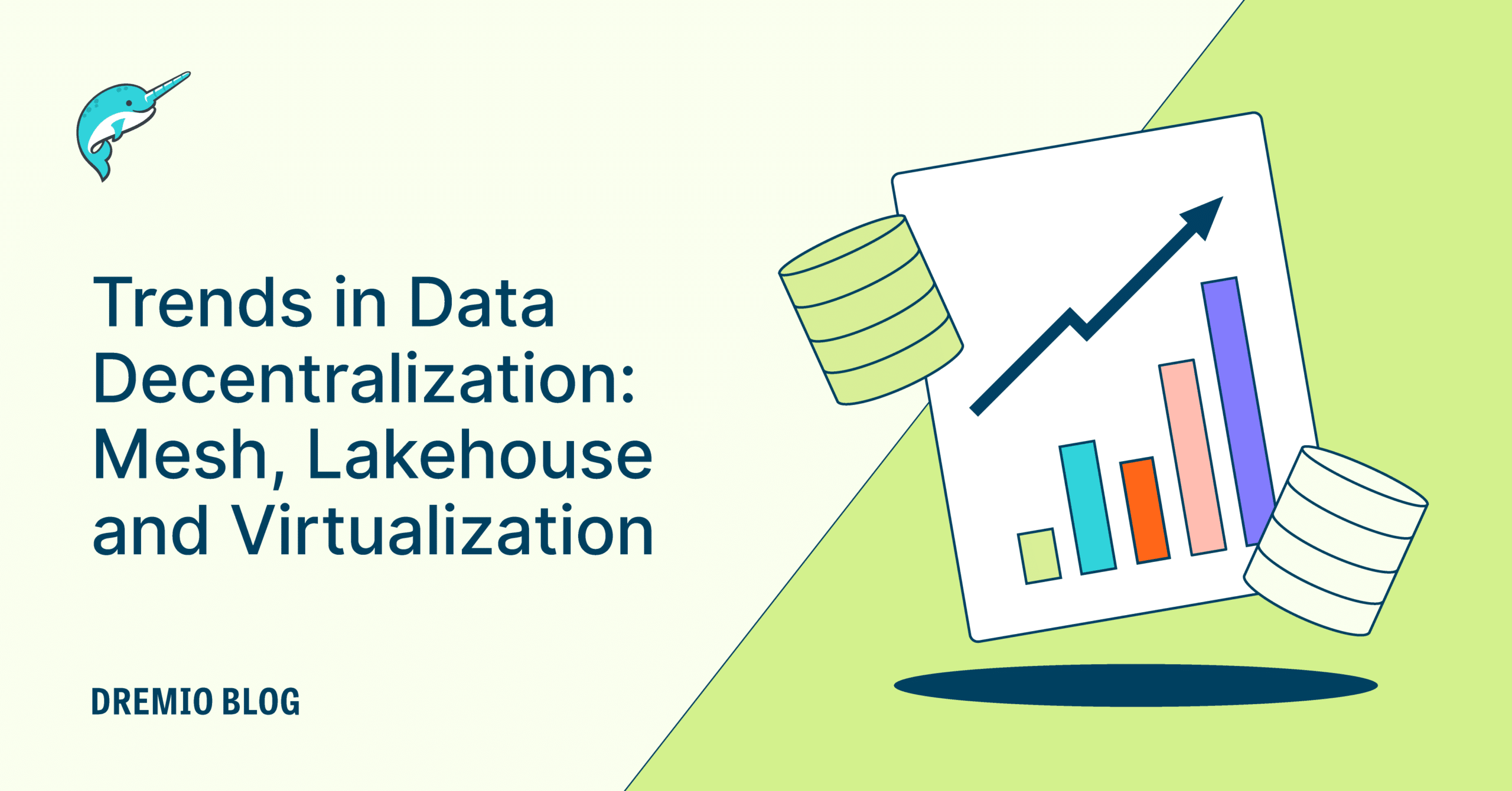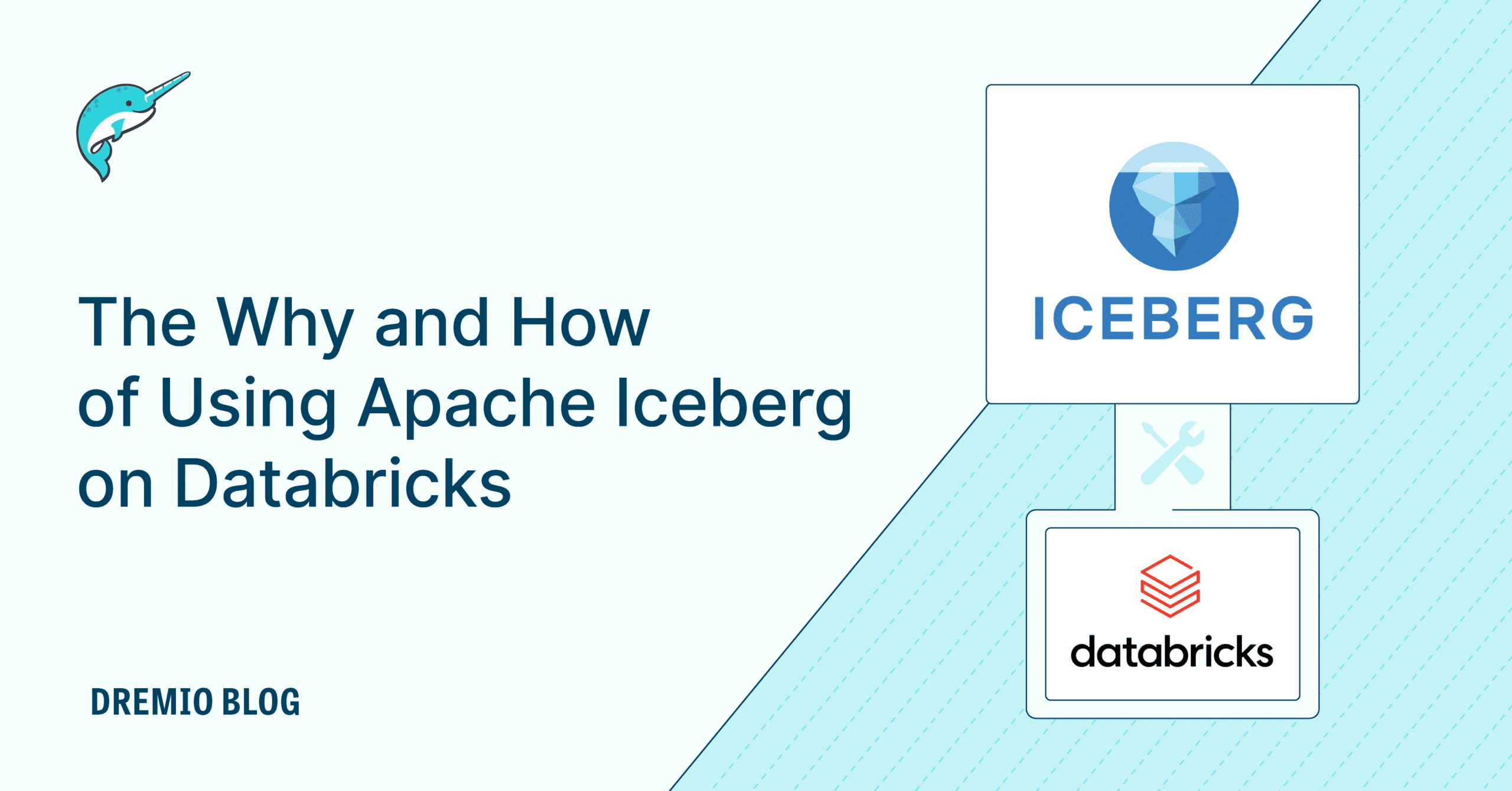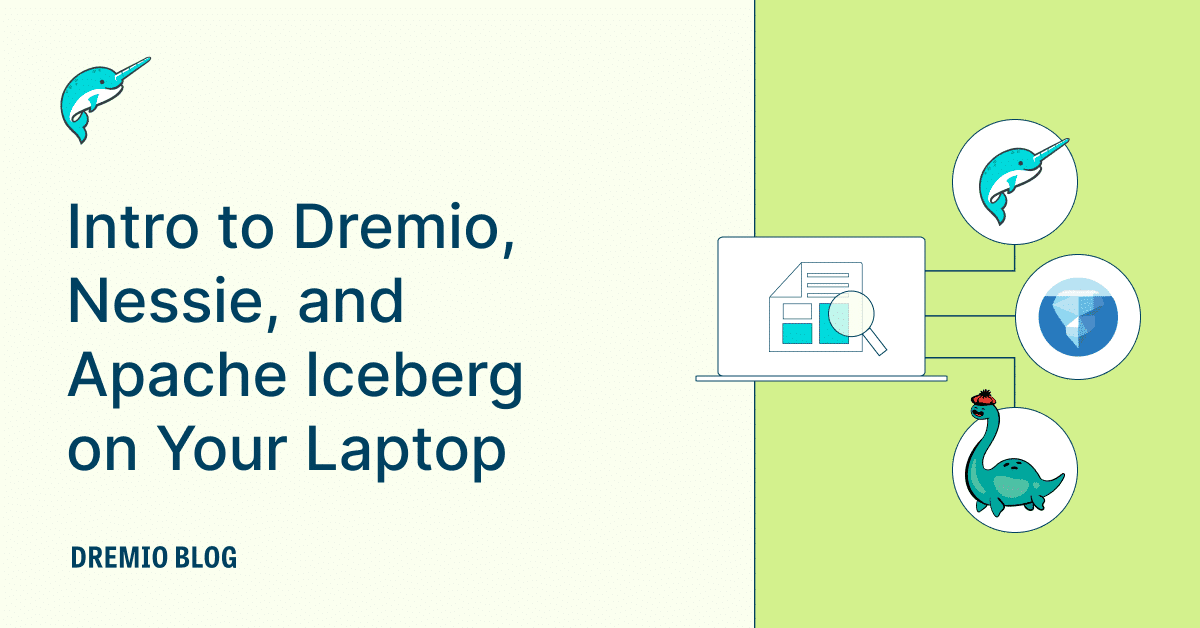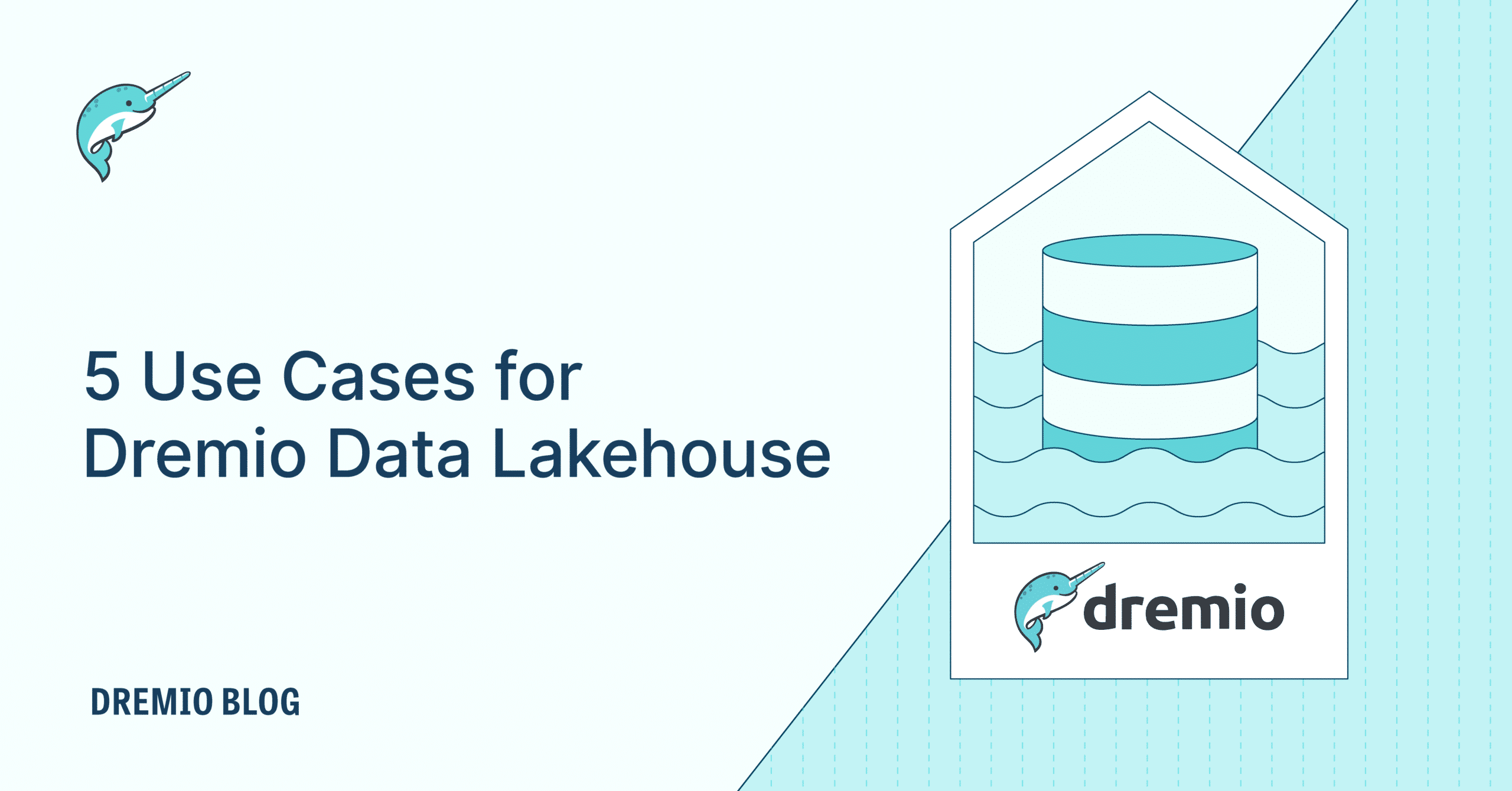7 minute read · February 1, 2024
Trends in Data Decentralization: Mesh, Lakehouse, and Virtualization

· Senior Tech Evangelist, Dremio

The scale, speed, and variety of data are growing exponentially, presenting new challenges for traditional data architectures. Conventional systems, relying on extensive data pipelines from source systems to data lakes and warehouses, are increasingly seen as too slow, rigid, and costly. In response, a transformative approach is emerging: data decentralization. This blog post delves into three significant trends driving this shift: data lakehouse, data virtualization, and data mesh. Each trend represents a different facet of how we handle, access, and leverage data. We'll also explore how Dremio, the data lakehouse platform, is uniquely positioned to harness these trends, offering a unified solution for the evolving data landscape.
Traditionally, data management involves moving data from source systems through pipelines into data lakes and warehouses. However, this method has struggled to keep pace with the burgeoning volumes of data, the diversity of data types, and the increasing demand for rapid access. The result has been a push toward more decentralized models. These models aim to overcome the limitations of traditional systems by offering greater flexibility, speed, and cost-effectiveness, all crucial in today’s fast-paced and data-driven world.

Data Lakehouse
The data lakehouse represents a pivotal trend in data decentralization. It’s a hybrid model that combines the expansive storage capacity of data lakes with the processing power of data warehouses. By building analytical systems around data lakes using open formats, data lakehouses facilitate a unified dataset accessible by various tools and platforms without data replication into different proprietary systems. This approach not only breaks down data silos but also decentralizes the tool ecosystem, allowing for greater flexibility and innovation in data analytics and management.
Data Virtualization
Data virtualization addresses a critical challenge in data management: not all data can or should be consolidated into a single repository, like databases, data warehouses, or data lakes. Data virtualization enables organizations to create a single point of access to disparate data sources, whether internal systems or external data-sharing platforms. This approach provides a unified view of data across the organization, regardless of its physical location, enhancing accessibility and decision-making while maintaining data integrity and security.
Data Mesh
Data mesh is a paradigm shift in data architecture, focusing on decentralizing the ownership and management of data. In a data mesh framework, data is managed by domain-oriented teams responsible for their "data products." These teams apply traditional product management principles to data, ensuring it is more cohesive, contextually relevant, and quickly delivered. By moving away from a central data team model, data mesh allows organizations to scale their data capabilities more effectively, with domain experts driving the data strategy, leading to more meaningful and timely data insights.
Dremio: A Unified Solution for Emerging Trends
Dremio emerges as a beacon in this landscape of data decentralization, adeptly unifying the trends of data lakehouse, data virtualization, and data mesh. It is a comprehensive platform that integrates these diverse trends, offering a powerful solution for modern data management challenges. Dremio’s approach not only addresses the need for scalable and flexible data storage and access but also ensures seamless data governance and analytics across varied data ecosystems.
In data lakehouses, Dremio demonstrates its prowess by offering robust support for the Apache Iceberg table format. This support allows for high-performance analytics directly on data lake storage, bypassing the need for data duplication or movement. Dremio enhances the data lakehouse model with features like an integrated Nessie-based catalog, providing git-like semantics for version control and data lineage. Moreover, its automated lakehouse table optimization features streamline data management, ensuring efficient data handling and reduced overhead.
Dremio excels in data virtualization by connecting to various databases, data lakes, and data warehouses. This capability allows users to create a unified semantic layer, simplifying access and governance across disparate data sources. The platform’s role, column, and row-based access controls enable precise and secure data management, ensuring compliance and data security in a decentralized data environment. This unified access layer empowers users to interact with data seamlessly, regardless of physical location.
In the domain of data mesh, Dremio's semantic layer and governance features shine, facilitating decentralized collaboration and management. The platform enables different data product teams to autonomously connect their preferred sources, curate, and govern their data products. This decentralized yet cohesive approach promotes more focused and contextually relevant data solutions, enhancing the quality and utility of data insights across the organization.
Conclusion

Data lakehouse, data virtualization, and data mesh trends significantly shift how we approach data management, addressing today's growing scale, speed, and complexity. Dremio stands at the forefront of this evolution, offering an integrated solution that encapsulates these trends. Its ability to provide advanced analytics, unified access, and decentralized governance makes it an invaluable asset for any organization looking to navigate the complexities of modern data ecosystems.
As we continue to witness the evolution of data management strategies, it’s clear that platforms like Dremio are pivotal in harnessing the full potential of data decentralization. We encourage you to explore how Dremio can fit into your data strategy and take advantage of these emerging trends.
Create a Prototype Data Lakehouse on Your Laptop with this Tutorial


